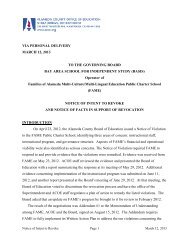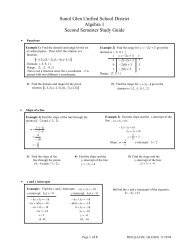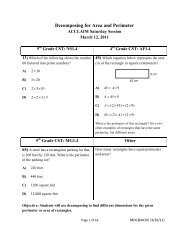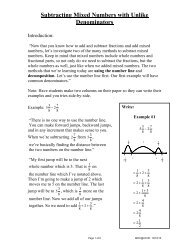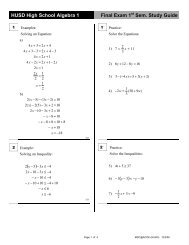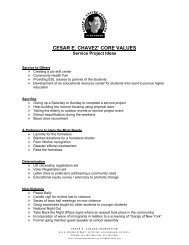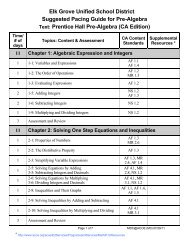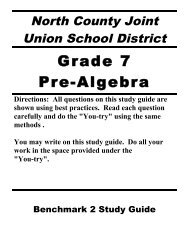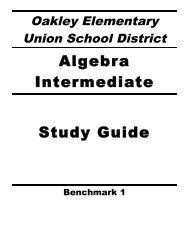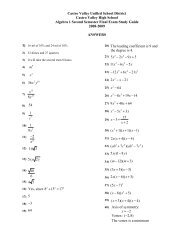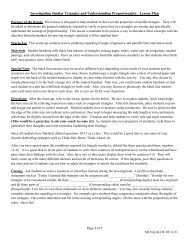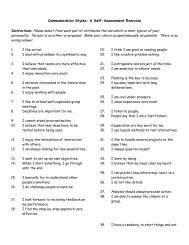Foundational Literacy Skills for EL- English Learners (CA Dept of ...
Foundational Literacy Skills for EL- English Learners (CA Dept of ...
Foundational Literacy Skills for EL- English Learners (CA Dept of ...
Create successful ePaper yourself
Turn your PDF publications into a flip-book with our unique Google optimized e-Paper software.
Grade 1<br />
Note: Below Grade‐Level Standards Need to be Adapted <strong>for</strong> Student Age, Cognitive Level, and Experience<br />
Student Language &<br />
<strong>Literacy</strong> Characteristics:<br />
Considerations <strong>for</strong> <strong>Literacy</strong><br />
<strong>Foundational</strong> <strong>Skills</strong> Instruction<br />
<strong>CA</strong> Common Core Reading Standards:<br />
<strong>Foundational</strong> <strong>Skills</strong><br />
Oral <strong>Skills</strong><br />
No or little spoken <strong>English</strong> pr<strong>of</strong>iciency<br />
Spoken <strong>English</strong> pr<strong>of</strong>iciency<br />
Students will need instruction in recognizing and<br />
distinguishing the sounds <strong>of</strong> <strong>English</strong> as compared or<br />
contrasted with sounds in their native language (e.g.,<br />
vowels, consonants, consonant blends, syllable<br />
structures).<br />
Students can apply their knowledge <strong>of</strong> the <strong>English</strong><br />
sound system to foundational literacy learning.<br />
Phonological Awareness<br />
2. Demonstrate understanding <strong>of</strong> spoken words,<br />
syllables, and sounds (phonemes).<br />
RF.K.2<br />
RF.1.2<br />
Print <strong>Skills</strong><br />
No or little native language literacy<br />
Some foundational literacy pr<strong>of</strong>iciency<br />
in a language not using the Latin<br />
alphabet (e.g., Arabic, Chinese,<br />
Korean, Russian)<br />
Some foundational literacy pr<strong>of</strong>iciency<br />
in a language using the Latin alphabet<br />
(e.g., Spanish)<br />
Students will need to learn print concepts.<br />
Students will be familiar with print concepts, and will<br />
need to learn the Latin alphabet <strong>for</strong> <strong>English</strong>,<br />
comparing and contrasting with their native language<br />
writing system (e.g., direction <strong>of</strong> print, symbols<br />
representing whole words, syllables or phonemes).<br />
Students can apply their knowledge <strong>of</strong> print concepts<br />
and phonics and word recognition to the <strong>English</strong><br />
writing system, comparing and contrasting with their<br />
native language alphabet (e.g., letters that are the<br />
same or different, or represent the same or different<br />
sounds) and native language vocabulary (cognates)<br />
and sentence structure (e.g., SVO vs. SOV word<br />
order).<br />
Print Concepts<br />
1. Demonstrate understanding <strong>of</strong> the organization<br />
and basic features <strong>of</strong> print.<br />
RF.K.1<br />
RF.1.1<br />
Phonics and Word Recognition<br />
3. Know and apply grade‐level phonics and word<br />
analysis skills in decoding words.<br />
RF.K.3<br />
RF.1.3<br />
Fluency<br />
4. Read with sufficient accuracy and fluency to<br />
support comprehension.<br />
RF.1.4<br />
6



